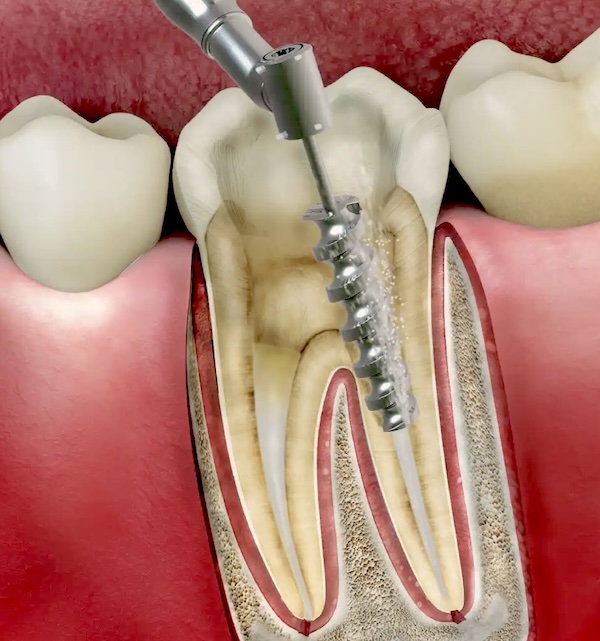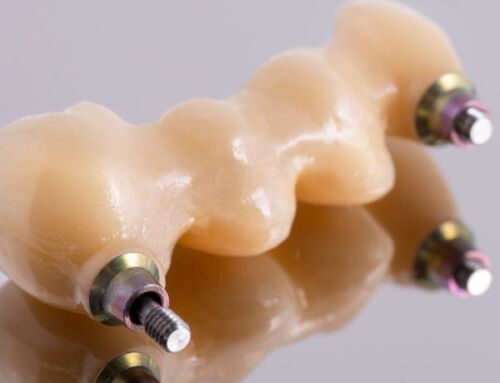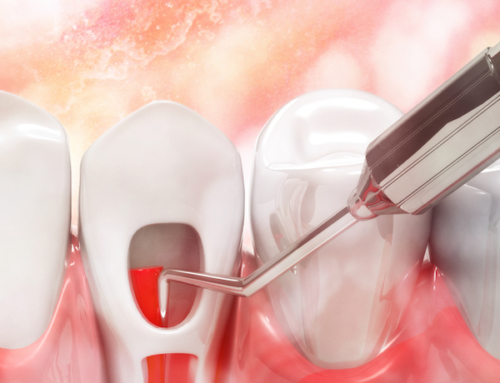If you are experiencing severe toothache or discomfort, increased tooth sensitivity, pain when biting or chewing, and have a pimple on your gum near a decayed or damaged tooth, then you may be dealing with an infected tooth.
An infected tooth can drastically affect your everyday life. Because of this, urgent treatment with a root canal is required. Root canal treatment effectively removes infection, alleviates the symptoms of an infection, and preserves the tooth to keep your smile complete, healthy, and beautiful.
What is a Root Canal?
A root canal is a procedure done to a severely decayed, broken, and infected tooth. Usually, this is recommended if the cavity is too big for a dental filling. If the bacteria has already reached deep into the tooth, extra measures done with root canal will disinfect the tooth, effectively saving it from a possible extraction.
A root canal treatment involves three major steps to restore the tooth to good health and repair its normal appearance and function. This includes removing the bacteria, sealing the tooth to prevent reinfection, and placing a filling or crown to complete the treatment.
Signs and Symptoms of Root Canal
The most common signs that you need a root canal are pain, discomfort when biting or chewing, and a pimple on the gums (gumboil). These may not occur at once, but if you are experiencing any one of them, it is best to visit your dentist so they can determine if a root canal is what you need.
Other telltale signs that indicate the need for a root canal treatment are:
- Sensitivity to hot and cold food and/or drinks
- Swelling or tenderness in the gums
- Tooth discolouration
- Persistent bad breath
- Bad taste in the mouth
- Loose tooth
Early intervention is crucial when it comes to root canal treatment. This prevents the spread of bacteria which can harm the surrounding structures and cause serious complications and a more extensive procedure..
What Happens During a Root Canal
If you are curious about what happens in a root canal treatment, here is a short overview of what to expect:
Eliminating existing bacteria
The first step is to eliminate all bacteria by removing decay and the diseased pulp. This is done through files that reach into the apex of the tooth root to ensure that all infected areas are cleaned.
Preparing the tooth to receive the medications
Then, the canals are shaped to prepare it to receive the medication. This is crucial to mid-sized infections. Medications help to lessen and completely eliminate the infection.
Sealing the tooth
A sealant is placed inside the canals to prevent bacteria from going into the tooth and causing future problems.
Restoring the form and function of the tooth
The last step is to rebuild the appearance of the tooth, restore its form so it can function normally, and protect it from any damage. This is often done with a bespoke dental crown that looks just like your natural tooth.
Benefits of a Root Canal
A root canal can have many benefits, including relief from pain and discomfort, improved function and form of the natural tooth, and a lifetime of better oral health.
Root canal preserves your natural tooth
The main benefit of root canal over other treatment alternatives for an infected tooth is tooth preservation. As much as possible, the goal is to save your natural tooth—because nothing is quite like it!
If you get your tooth extracted instead of getting a root canal, you have to get it replaced as soon as possible or the teeth will shift and cause gaps in the smile. While you can consider getting a bridge, dentures, or even a dental implant, these are inferior to your natural tooth in function and appearance. You also have to think about getting them replaced once they have worn out, which can cost you more down the road.
More sustainable and cost-effective treatment
That being said, preserving the tooth prevents the need for more expensive and extensive treatments in the future— which can happen if you decide to get the tooth removed instead. When done right, root canal treatment and saving the tooth offers a more permanent solution. If properly maintained, a root canal treated tooth can stay intact and healthy for a lifetime.
Improved oral health
Lastly, removing infection prevents serious complications that may drastically affect the health. Root canal treatment is also designed to prevent future reinfections, effectively maintaining optimal oral health for years to come.
Recovery and Outlook After a Root Canal
A root canal treatment can be done in a single appointment or may require a few dental visits spanning a few weeks. Revisits are scheduled to allow the medication to take effect in the canal and eliminate existing infection. Once the infection has resolved, your dentist can replace the medication with a root canal sealant to restore the health of the canals.
However the procedure may go, the recovery time after root canal treatment is minimal. Some patients may experience tooth sensitivity, tenderness of the gums, and some discomfort with chewing. But, this should subside after a few days and your tooth should feel good as new in no time.
Taking Care of a Root Canal Tooth
After your root canal procedure, the key to improving its lifespan is to ensure that your oral health is well-maintained. Take care of it as you would take care of your natural tooth. If you feel anything out of the ordinary, visit your dentist as soon as possible for early treatment.
Here are some tips that you can take to keep your tooth healthy for years to come.
- Brush and floss twice a day.
- Use a fluoride-rich toothpaste when you brush your teeth.
- Rinse with an antibacterial mouthwash.
- Maintain a healthy and balanced diet.
- Avoid biting anything too hard, chewy, sticky, or crunchy.
- Visit the dentist every six months for routine check-up and cleaning.
Next Steps
Root canal treatment is an excellent solution to resolve a tooth infection without needing a tooth extraction and having to deal with the consequences of a missing tooth. And with good care, you can expect it to last many years, making it a great investment to your smile.
Book your appointment today for a root canal consultation and let us help you discover what it can do for your smile and oral health.






